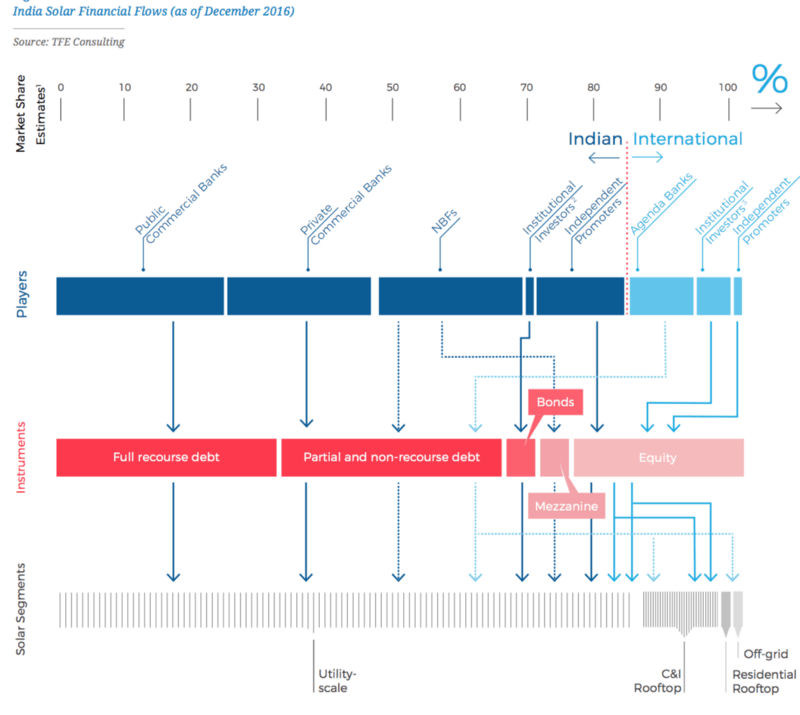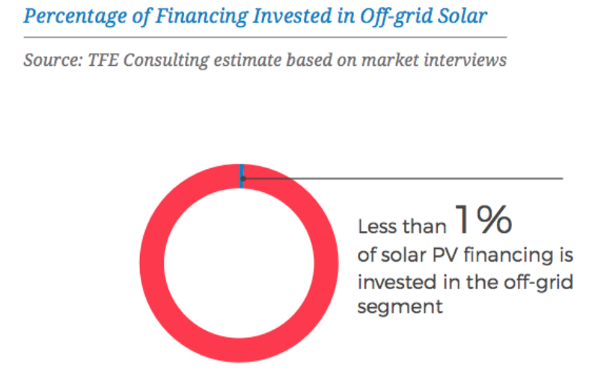Mohit Anand of TFE Consulting discusses the challenges of accessing capital for decentralized renewable energy in India, and suggests securitization as a path forward
With less than 1% of solar PV financing in India invested in the off-grid segment, it has a very small share of the total market. Current financing for the segment is a patchwork of international donor grants, debt from international development finance institutions and owner equity. These sources are at best able to provide early stage funding for players. Off balance sheet debt financing critical to financing scale is difficult. Indian commercial banks rarely lend to the segment despite readily financing utility-scale solar.
A fragmented player landscape and a lack of viability are holding financing back. The market has over 100 recognized players and potentially hundreds more in the informal sector (particularly for the sale of solar appliances). However, most are highly localized with operations only at the village level. They have a small customer base and modest revenues of under €100,000 a year. Additionally, due to high distribution and customer acquisition costs and the weak payment capacity of off-grid customers, margins for players across the segment are typically very low at less than 5%, with many failing to breakeven. Of the few attractive investment options, low margins have left financiers unconvinced about the sustainability of players’ business models.

Furthermore, a lack of consumer financing makes it difficult for businesses to scale, a key requirement for investors. The challenge is that banking penetration in off-grid areas is very low and there are few financing options for consumers. Additionally, income security for off-grid consumers is low due to few, seasonal work opportunities. As a result, they have a high-risk profile and typically no assets to offer as collateral. Bank officials at the local level are too risk averse to lend to such customers. They are further discouraged by the small loan sizes sought by customers for such systems.
Another barrier is the inability of players to quantify the risks tied to customer payments, the underlying revenue source in these off-grid business models. With no payment history of end-customers, banks have very low visibility on players’ projected cash flows. Small financing volumes are also a barrier. Individual player volumes are too small for financial institutions to commit the transaction costs of due diligence. Additionally, solar off-grid transactions do not fit standardized financial assessment metrics. As a result, banks are unable to compare them with alternatives in India and abroad and, therefore, are unable to assess their relative bankability.
A number of policy solutions could be affective in addressing the challenges in the market since these can often directly impact capital flows. For the purposes of this analysis, however, the focus is more on identifying new financial instruments that could be effective.
Securitization as a solution
A potential financing solution for the segment is securitization. This can help energy access companies refinance their existing portfolio at a lower capital cost by reducing the risk through a portfolio of diverse assets. A key ingredient for the success of solar securitization is the proper assessment and pricing of the risk associated with a particular pool of assets.
A good example of this approach is the risk assessment and securitization platform pioneered by Lendable in East Africa. Lendable aggregates outstanding solar consumer loans or leases. It has developed a risk assessment algorithm that it uses in combination with data gathered from installers to predict end-consumer cash flows and validate them. This allows it to assess consumer payment risk and price investments. With reliable risk assessment and a large enough pool of assets, it develops securities that are then offered to international institutional investors. Lendable has used this model to raise financing for PAYGO solar businesses as well as for micro-lenders and motorcycle leasing businesses in East Africa.
You can read more on this by downloading the new TFE Consulting report India’s Solar Leap: Financing a Mature Market
The views in this article are those of the author Mohit Anand and do not reflect the views or findings of any studies or organizations mentioned.
Note on research: In order to assess the financing landscape in India, TFE has compared publicly available data and its own market models with the results of over 40 interviews with India’s leading developers, investors and banks. TFE asked them questions relating to their own financing strategy and experience as well as on their view of the market at large. The resulting market numbers are an approximation.
